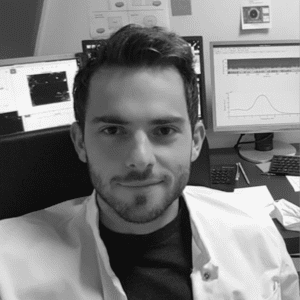Keysers Groep
Het empathische brein

Het empathische brein
Als dat zo is, heb je de kracht van empathie ervaren: het vermogen om de emoties van anderen te delen en te begrijpen. Maar hoe werkt empathie in de hersenen? Empathie kan heel krachtig zijn en zowel voor goede als slechte doeleinden worden gebruikt: we kunnen iemand in nood helpen, maar een psychopaat kan empathie gebruiken om vrouwen te manipuleren en het uitschakelen tijdens het verkrachten. De meeste mensen gaan natuurlijk nooit zo ver, maar iedereen kan empathie strategisch inzetten, can use empathy strategically en zich alleen de emotionele aspecten van een ervaring herinneren wanneer dat hen uitkomt.
Sommige wetenschappers denken dat we anderen helpen om egoïstische redenen, namelijk om onszelf te bevrijden van de pijn die we door onze empathie ervaren: we helpen anderen omdat we zelf lijden. Anderen zeggen dat we helpen om morele redenen: we helpen omdat onze cognitie ons daartoe aanzet. Deze twee denkrichtingen bestrijden elkaar al eeuwen. Begrijpen hoe empathieniveaus tussen mensen verschillen en hoe we onze empathische gevoelens reguleren, staat centraal in ons onderzoek.
Het lab van Christian Keysers onderzoekt de neurale basis van empathie door gebruik te maken van geavanceerde methoden om de activiteit te meten en te manipuleren van hersengebieden die betrokken zijn bij het voelen en observeren van emoties, sensaties en acties, zowel bij mensen als bij knaagdieren.
Empathie is niet uniek voor mensen: in onze experimenten geven we ratten de keuze om zichzelf voedsel te geven door op een van twee hendels te drukken; de ene hendel is heel gemakkelijk te bedienen, terwijl de andere meer moeite kost. De meeste ratten kiezen voor de makkelijke optie, tenzij deze gepaard gaat met een noodkreet van een andere rat: dan stoppen ze met het gebruik van de makkelijke hendel en schakelen ze over naar de moeilijkere hendel om de andere rat te helpen.
Wanneer ratten de gestreste piep van een andere rat horen, worden dezelfde hersencellen actief als wanneer deze ratten zelf pijn zouden ervaren. In menselijke hersenen zien we hetzelfde verschijnsel: onze hersenen zijn uitgerust met ‘gedeelde circuits’ die zowel actief worden wanneer we iets zelf meemaken als wanneer we zien dat iemand anders iets soortgelijks ervaart.
Hoewel onze hersenen complexer zijn dan die van ratten, delen we de basis voor empathie in hetzelfde hersengebied: de cingulate cortex. Dit hersengebied helpt ons ons in te leven in anderen, waardoor we hen niet begrijpen via rationeel denken, maar via intuïtief voelen. Neurowetenschap maakt het mogelijk om door te dringen in de belevingswereld van mensen en dieren, en laat zien dat empathie een diepgewortelde evolutionaire neiging is: als we de hersenactiviteit in de cingulate cortex blokkeren, gaan de ratten weer de makkelijke hendel gebruiken.

PhD student
Bekijk profiel
PhD student
Bekijk profiel
Student
Bekijk profiel
Postdoc
Bekijk profiel
Postdoc
Bekijk profiel
PhD student
Bekijk profiel
Student
Bekijk profiel
PhD student
Bekijk profiel
Postdoc
Bekijk profiel
Head of department
Bekijk profiel
Student
Bekijk profiel
Postdoc
Bekijk profiel
postdoc
Bekijk profiel
Student
Bekijk profiel
Student
Bekijk profiel
postdoc
Bekijk profiel
Postdoc
Bekijk profiel
Student
Bekijk profielMomenteel zijn er geen vacatures binnen deze groep.
Bekijk alle vacatures
"*" geeft vereiste velden aan
Je kunt jouw bijdrage ook overmaken op NL76 INGB 0002 1673 78 t.n.v. Stichting Vrienden van het Herseninstituut
De Stichting Vrienden van het Herseninstituut ondersteunt baanbrekend hersenonderzoek. U kunt ons daarbij helpen.
Steun ons werk